Abstract
Event-related potentials (ERPs) were recorded from 19 closed head injury (CHI) patients, at least 6 months after injury, and an equal number of control subjects, during a task requiring the covert counting of rare auditory "target" stimuli against a background of frequent "non-targets". In both groups, ERPs to targets contained enhanced frontal N2 and parietal P3 components. N2 was larger in amplitude in the CHI patients than in the controls, and its peak latency was delayed. P3 amplitude was smaller in the patients, but its latency was not significantly different from that of the control group. The delay in N2 latency is interpreted as evidence of an increase in the time needed to achieve stimulus categorisation in CHI patients. The larger N2s in this group are thought to reflect the additional cognitive effort required after CHI to cope with the task. The negative findings with respect to P3 latency suggest that this may be a less sensitive measure of information-processing efficiency in this task than the latency of N2.
Full text
PDF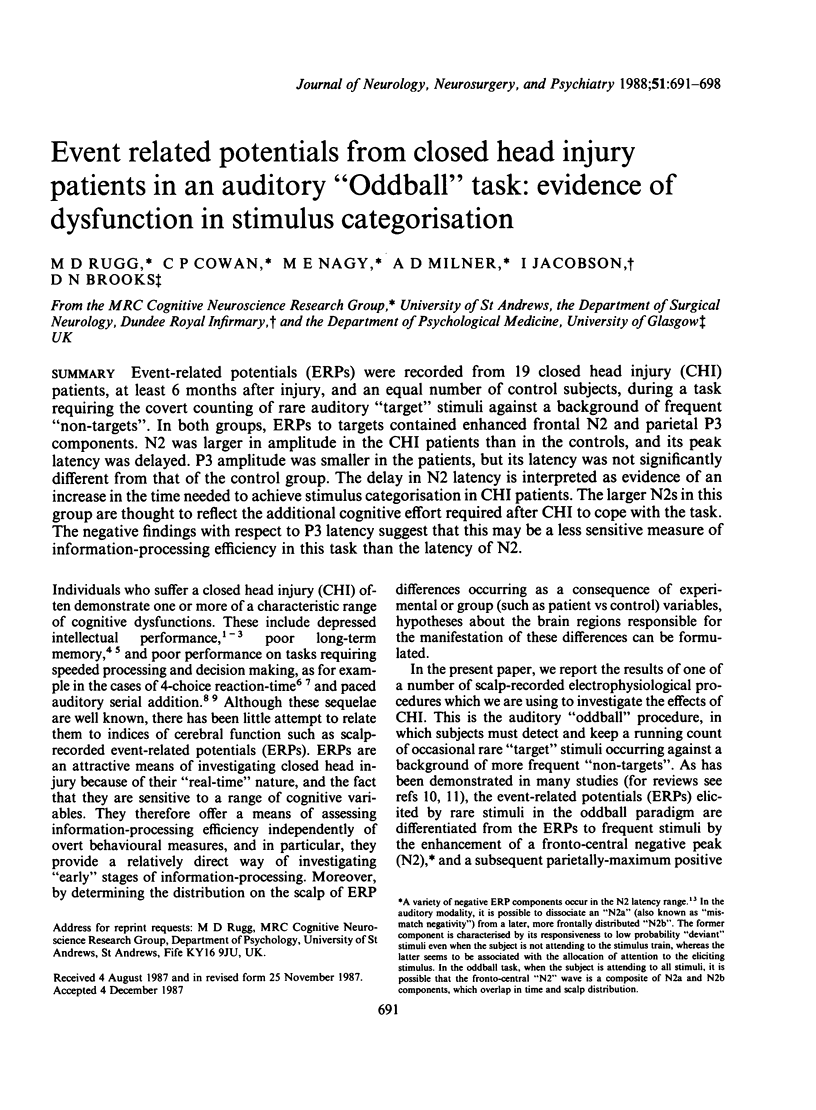
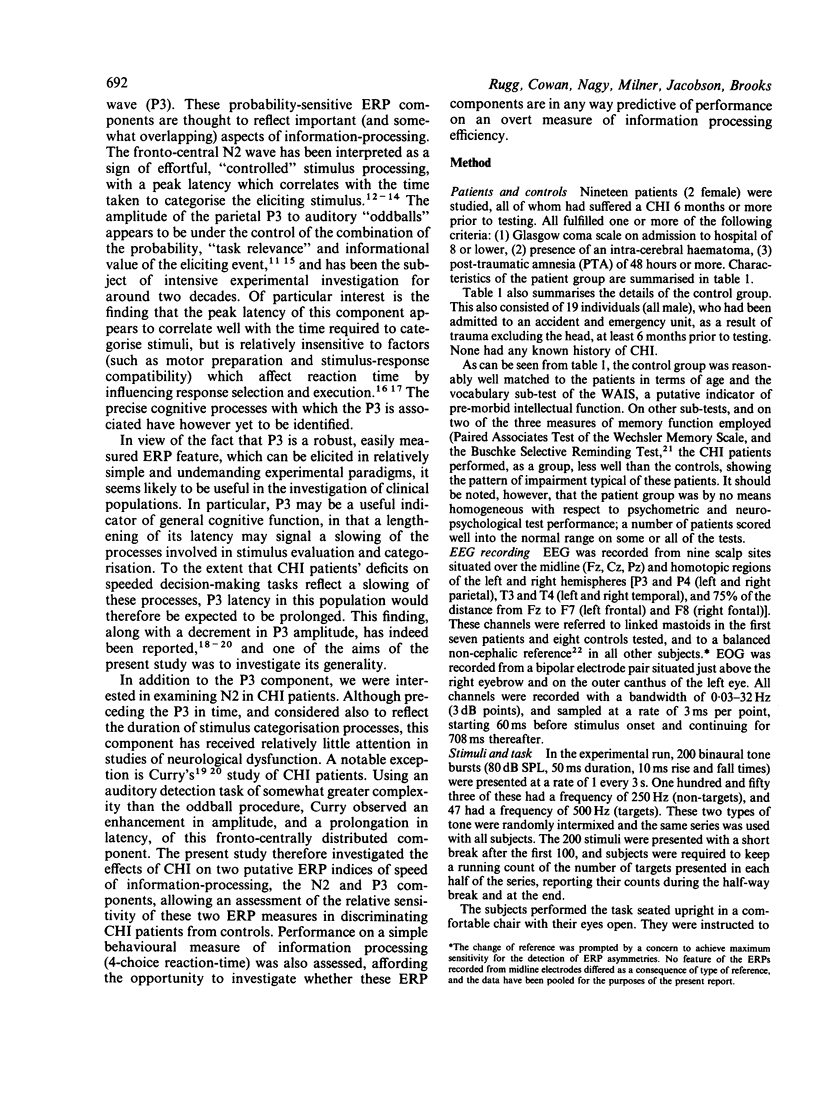
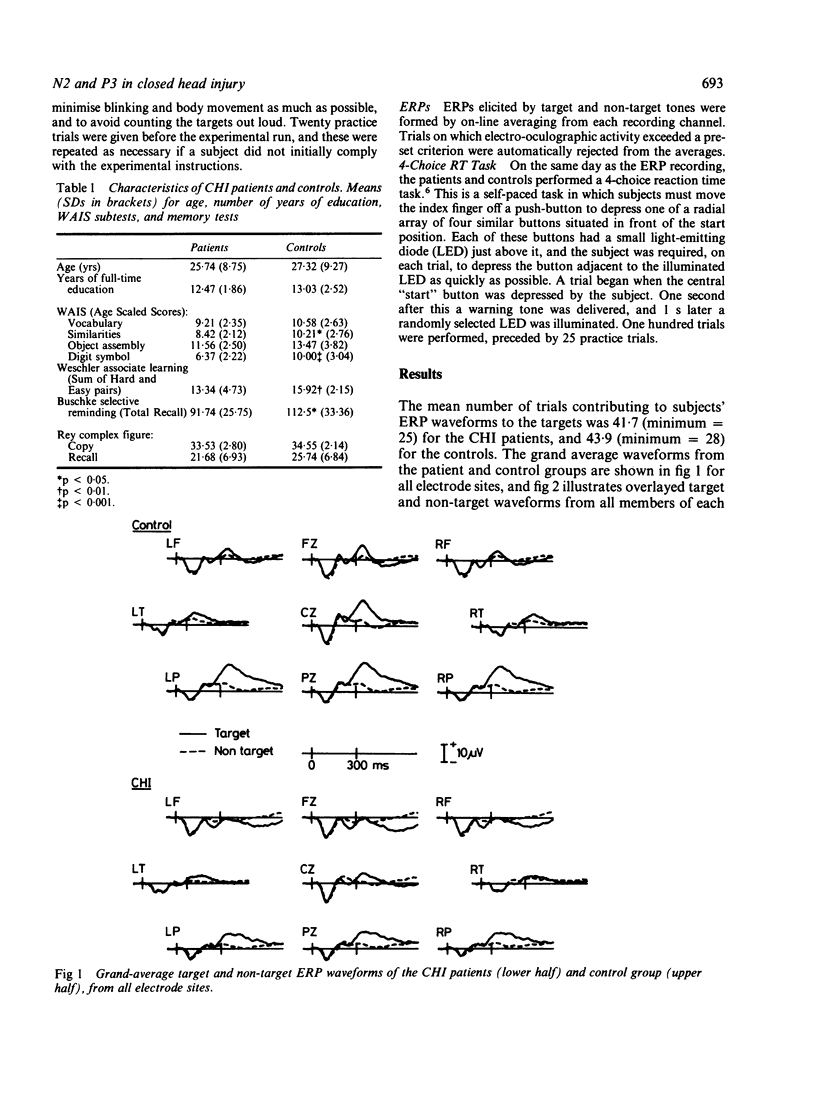
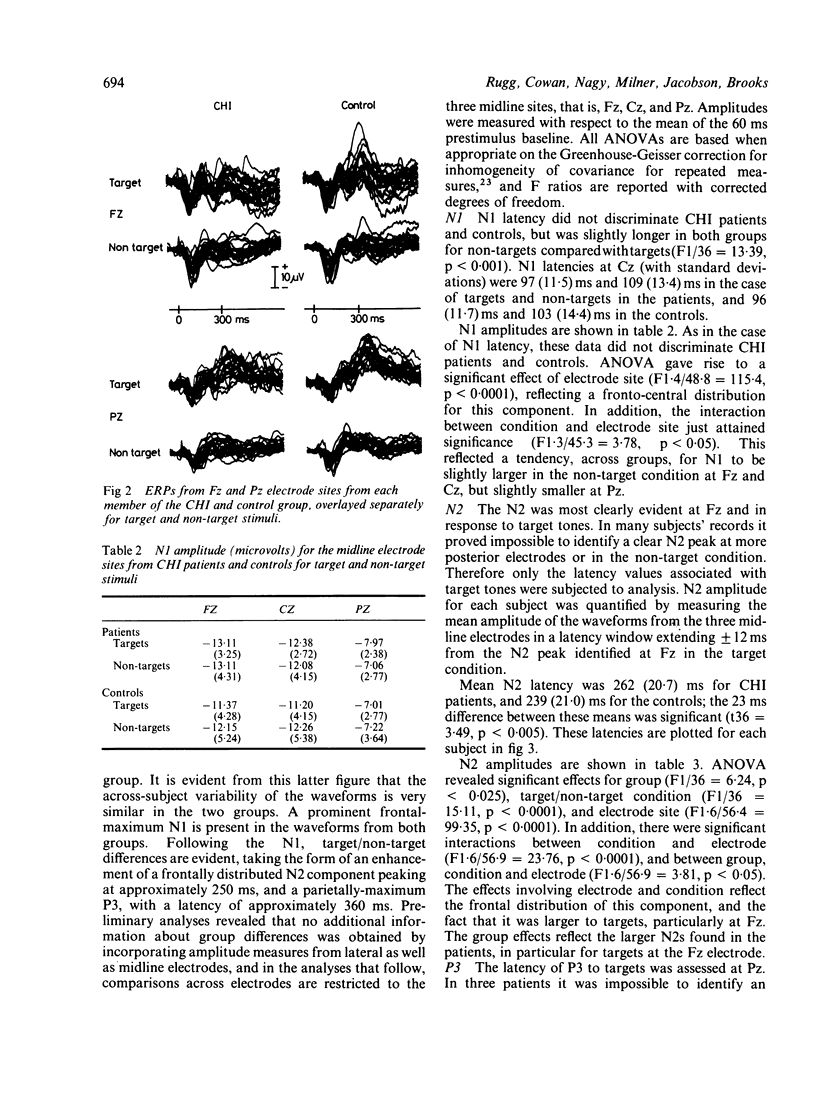
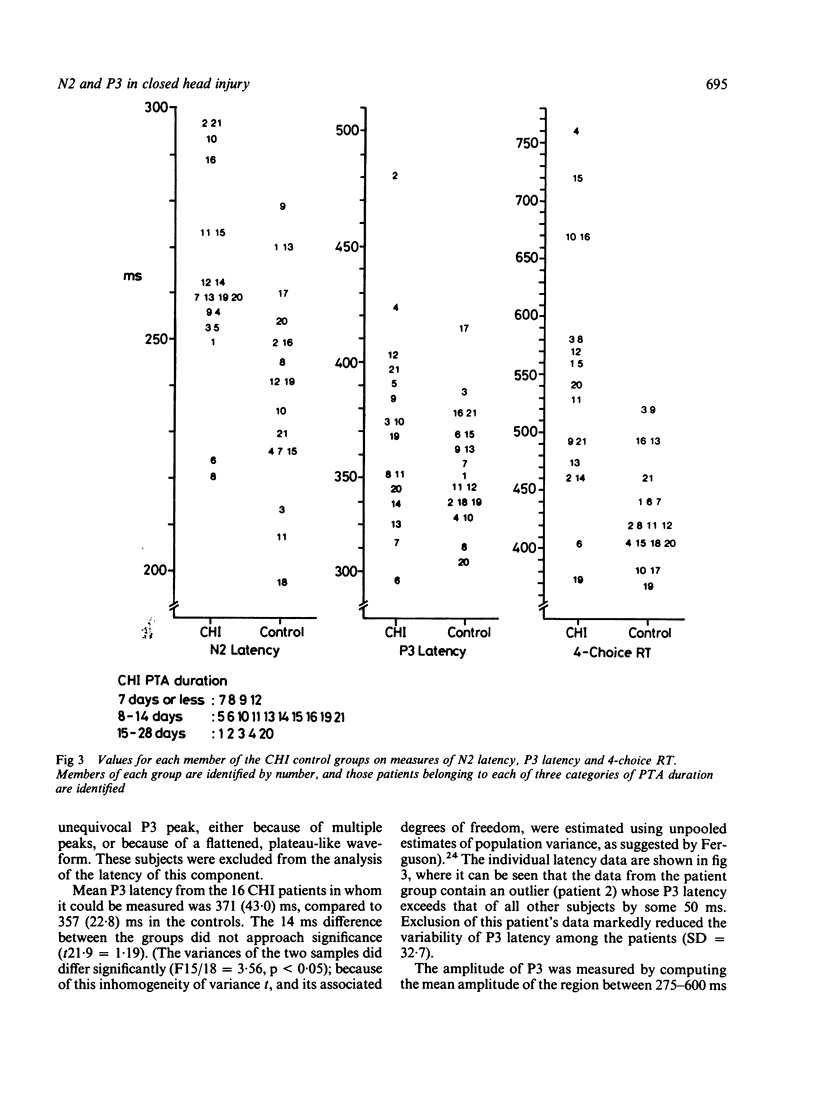
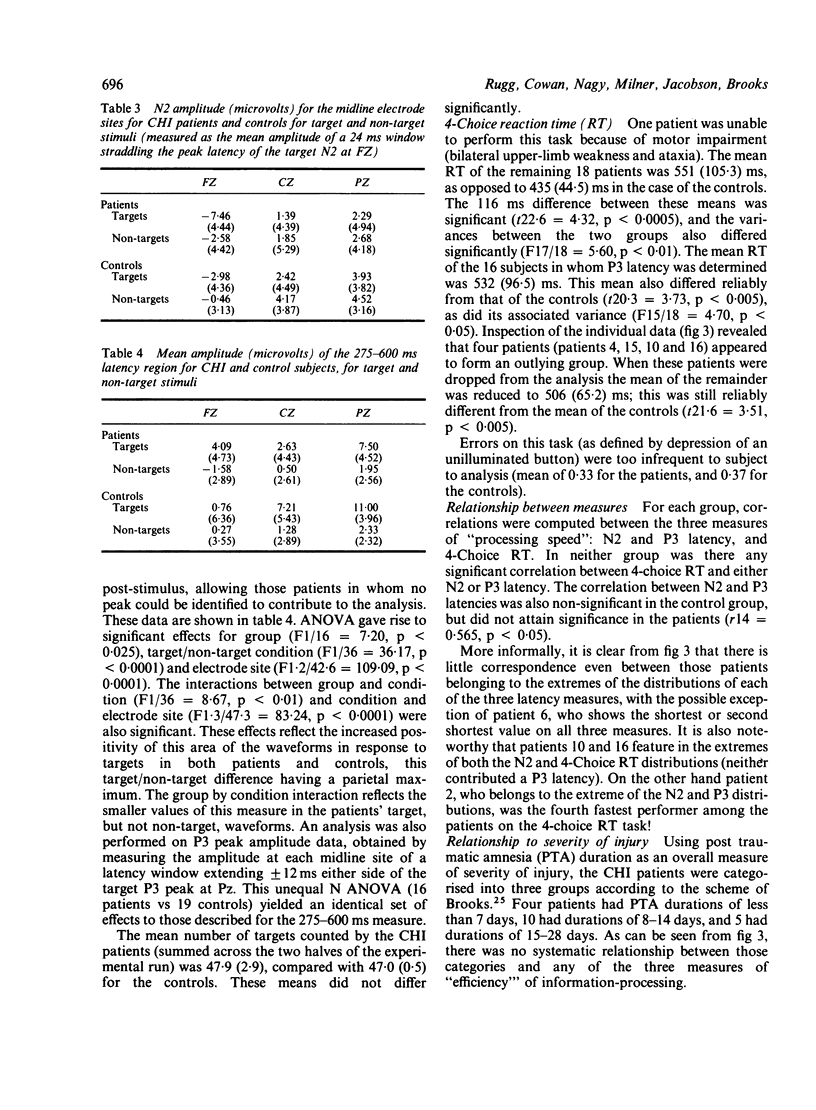
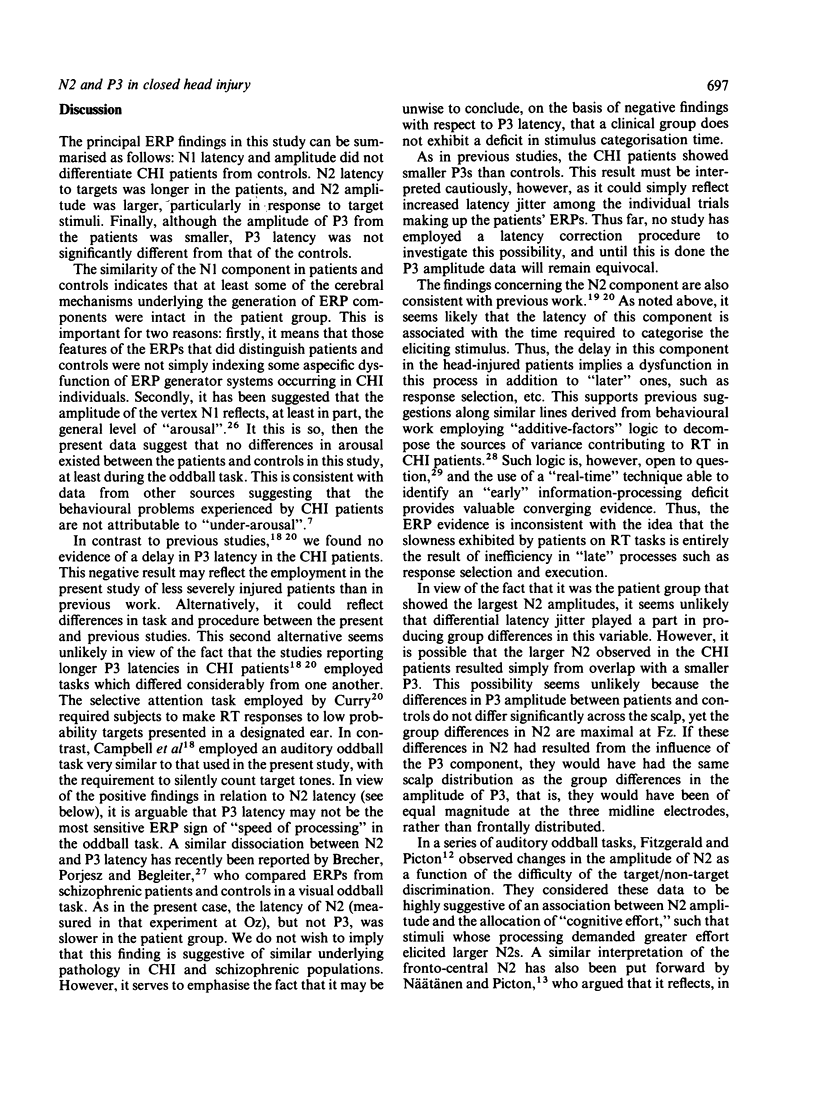
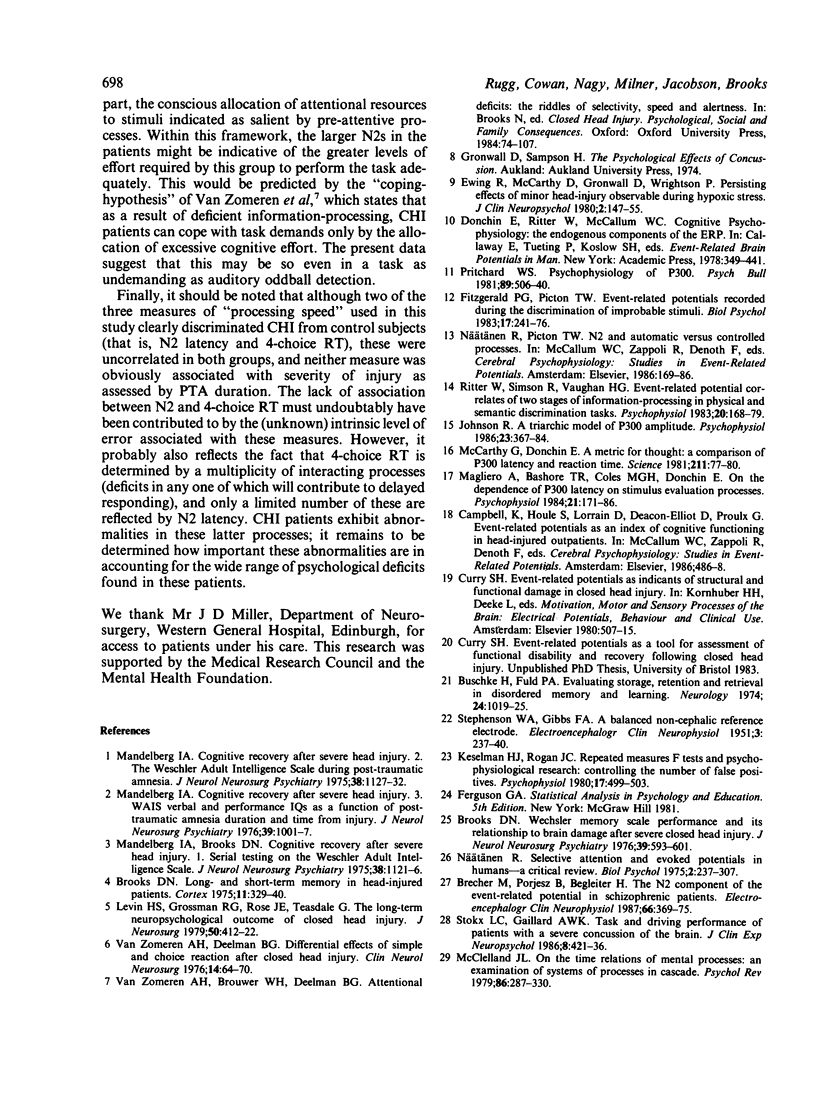
Selected References
These references are in PubMed. This may not be the complete list of references from this article.
- Brecher M., Porjesz B., Begleiter H. The N2 component of the event-related potential in schizophrenic patients. Electroencephalogr Clin Neurophysiol. 1987 Apr;66(4):369–375. doi: 10.1016/0013-4694(87)90205-7. [DOI] [PubMed] [Google Scholar]
- Brooks D. N. Long and short term memory in head injured patients. Cortex. 1975 Dec;11(4):329–340. doi: 10.1016/s0010-9452(75)80025-6. [DOI] [PubMed] [Google Scholar]
- Brooks D. N. Wechsler Memory Scale performance and its relationship to brain damage after severe closed head injury. J Neurol Neurosurg Psychiatry. 1976 Jun;39(6):593–601. doi: 10.1136/jnnp.39.6.593. [DOI] [PMC free article] [PubMed] [Google Scholar]
- Buschke H., Fuld P. A. Evaluating storage, retention, and retrieval in disordered memory and learning. Neurology. 1974 Nov;24(11):1019–1025. doi: 10.1212/wnl.24.11.1019. [DOI] [PubMed] [Google Scholar]
- Fitzgerald P. G., Picton T. W. Event-related potentials recorded during the discrimination of improbable stimuli. Biol Psychol. 1983 Dec;17(4):241–276. doi: 10.1016/0301-0511(83)90003-0. [DOI] [PubMed] [Google Scholar]
- Johnson R., Jr A triarchic model of P300 amplitude. Psychophysiology. 1986 Jul;23(4):367–384. doi: 10.1111/j.1469-8986.1986.tb00649.x. [DOI] [PubMed] [Google Scholar]
- Keselman H. J., Rogan J. C. Repeated measures F tests and psychophysiological research: controlling the number of false positives. Psychophysiology. 1980 Sep;17(5):499–503. doi: 10.1111/j.1469-8986.1980.tb00190.x. [DOI] [PubMed] [Google Scholar]
- Magliero A., Bashore T. R., Coles M. G., Donchin E. On the dependence of P300 latency on stimulus evaluation processes. Psychophysiology. 1984 Mar;21(2):171–186. doi: 10.1111/j.1469-8986.1984.tb00201.x. [DOI] [PubMed] [Google Scholar]
- Mandleberg I. A., Brooks D. N. Cognitive recovery after severe head injury. 1. Serial testing on the Wechsler Adult Intelligence Scale. J Neurol Neurosurg Psychiatry. 1975 Nov;38(11):1121–1126. doi: 10.1136/jnnp.38.11.1121. [DOI] [PMC free article] [PubMed] [Google Scholar]
- Mandleberg I. A. Cognitive recovery after severe head injury. 2. Wechsler Adult Intelligence Scale during post-traumatic amnesia. J Neurol Neurosurg Psychiatry. 1975 Nov;38(11):1127–1132. doi: 10.1136/jnnp.38.11.1127. [DOI] [PMC free article] [PubMed] [Google Scholar]
- Mandleberg I. A. Cognitive recovery after severe head injury. 3. WAIS verbal and performance IQs as a function of post-traumatic amnesia duration and time from injury. J Neurol Neurosurg Psychiatry. 1976 Oct;39(10):1001–1007. doi: 10.1136/jnnp.39.10.1001. [DOI] [PMC free article] [PubMed] [Google Scholar]
- McCarthy G., Donchin E. A metric for thought: a comparison of P300 latency and reaction time. Science. 1981 Jan 2;211(4477):77–80. doi: 10.1126/science.7444452. [DOI] [PubMed] [Google Scholar]
- Nätänen R. Selective attention and evoked potentials in humans--a critical review. Biol Psychol. 1975 May;2(4):237–307. doi: 10.1016/0301-0511(75)90038-1. [DOI] [PubMed] [Google Scholar]
- Pritchard W. S. Psychophysiology of P300. Psychol Bull. 1981 May;89(3):506–540. [PubMed] [Google Scholar]
- Ritter W., Simson R., Vaughan H. G., Jr Event-related potential correlates of two stages of information processing in physical and semantic discrimination tasks. Psychophysiology. 1983 Mar;20(2):168–179. doi: 10.1111/j.1469-8986.1983.tb03283.x. [DOI] [PubMed] [Google Scholar]
- STEPHENSON W. A., GIBBS F. A. A balanced non-cephalic reference electrode. Electroencephalogr Clin Neurophysiol. 1951 May;3(2):237–240. doi: 10.1016/0013-4694(51)90017-x. [DOI] [PubMed] [Google Scholar]
- Stokx L. C., Gaillard A. W. Task and driving performance of patients with a severe concussion of the brain. J Clin Exp Neuropsychol. 1986 Aug;8(4):421–436. doi: 10.1080/01688638608401332. [DOI] [PubMed] [Google Scholar]


